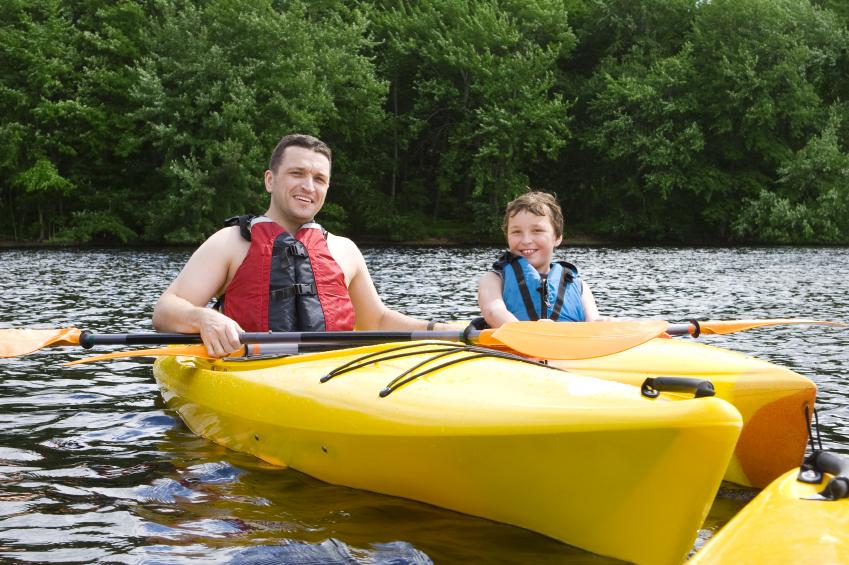 Invented by the Inuit for hunting seals and walruses in the frigid Arctic waters, kayaks make a great way for anyone to explore America’s waterways. Light in weight and highly maneuverable, kayaks add a new dimension to water recreation. Available as single or multiple person vessels, kayaks use a double bladed paddle for propulsion. The kayaker sits right on the bottom of the kayak (usually on a pad) with the legs extended out before them.
Invented by the Inuit for hunting seals and walruses in the frigid Arctic waters, kayaks make a great way for anyone to explore America’s waterways. Light in weight and highly maneuverable, kayaks add a new dimension to water recreation. Available as single or multiple person vessels, kayaks use a double bladed paddle for propulsion. The kayaker sits right on the bottom of the kayak (usually on a pad) with the legs extended out before them.
Kayaking is growing in popularity, but as with any outdoor sport, it is best done safely. There are 3 different levels of kayaking, and all have specific requirements if they are to be successful:
- Recreational kayaking is the easiest and requires few water skills. This kind of kayaking is done in calm water such as bays or small lakes, and trips will take only a few hours and cover less than 10 miles. A very inexpensive kayak is perfect for this relaxed form of the sport.
- Touring kayaking requires a higher skill level than recreational. Those who partake of this kind of kayaking will accessing larger lakes, rivers with some current, and even estuaries. These trips will last an entire day or weekend, and food and some camping gear will be taken along.
- Sea kayaking involves longer trips on large lakes and along the coast. Rivers with significant currents will also be used, and sea kayakers will have to be skilled at handling their vessel. Sea kayaking can involve a day or weekend trip or even a much longer expedition.
Kayaks are available that allow the paddler to sit on top of the boat or inside, and these boats are available as inflatable or rigid body vessels. Regardless of your skill level and what kind of kayaking you have in mind, it is of the utmost importance that you wear a flotation device at all times while in the kayak. The flotation device will be your most important piece of equipment.
There are other safety considerations when planning on even a short recreational trip in your kayak: always kayak with a friend, let relatives or friends know where you will be going and when you will return, and keep a weather eye out. Weather can change rapidly, especially on large bodies of water like the Great Lakes or ocean so be sure to check current weather reports before setting out.
Staying Healthy on Your Trip
Kayaks do have storage space in them, and those who will be taking longer trips will be taking along extra gear and perhaps some food. Because it’s likely that you’ll be getting wet at some point of your journey, you may want to take along a change of clothing in a waterproof bag. Those who are camping will need a sleeping bag at the very least.
Water can be a problem – containers of water are heavy and take up a considerable amount of room if a sea kayaking expedition is planned. For those kayaking on fresh water, the simplest solution is to bring along your own purification unit. Bottle water filters are probably the easiest and most convenient way to enjoy safe water during your trip; you can simply fill them from the lake or river and squeeze or pump out clean water. Water filter bottles will generally filter about 100 gallons of water.
Water filter straws are another option and will allow you to simply sip right out of the body of water (or a cup if you prefer). These are very light in weight and small in size and will filter between 25 and 100 gallons depending on brand.
Those who are combining kayaking with camping will find that a portable/camping water filter such as a pump or gravity feed water filter will provide plenty of pure, safe water for all members of the party to drink.


Share:
Rainshow'r Shower Filters for a Chlorine Free Shower
Why Mothers to Be Should Use Water Filters